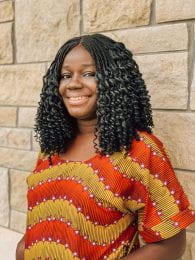As educators and program coordinators plan for global collaborations in a post-pandemic world, we have an opportunity to reimagine partnerships with reciprocity at the forefront. Separating Cultural Diplomacy from influencing global learning programs is essential to prevent foreign hegemony of the Global North.
In this blog, Chibuzor Azubuike critically looks at the relationship between Cultural Diplomacy and Global Service Learning

Cultural diplomacy and global service-learning
The goal of global service-learning is to instill cultural humility and intercultural competence among students. However, as facilitators focus on learning and growth for the students, reciprocity, another core aspect of global service-learning (GSL), is dampened and potentially ignored. When this happens, GSL appears to be a form of cultural diplomacy where the benefits are one sided. In this essay, I raise concerns about such developments, given that they raise an eyebrow about the motive of GSL if not checked.
Given my critical stance on cultural diplomacy, I do not want readers to assume that cultural diplomacy is all negative. Cultural diplomacy is a form of public diplomacy that enables one country to influence others. Due to the scarce resources at the disposal of third-world countries, they are unable to mobilize actions geared toward cultural diplomacy. In some cases, we have seen GSL being facilitated by first-world countries in developing countries, so the power relations make reciprocity difficult to attain.
What exactly is cultural diplomacy in the context of this essay? Cultural diplomacy enables a country to achieve foreign goals. According to (Carrió-Invernizzi, 2014; Mulcahy, 1999), cultural diplomacy involves all matters related to the diffusion of the language and culture of a country beyond its frontiers—at its best, it represents the exchange of ideas, information, art, and other aspects of culture among nations and their peoples to foster mutual understanding. Based on this definition above, GSL can appear to be characterized as a form of cultural diplomacy if not properly facilitated.
The implication is that leadership practitioners should not execute GSL programs with naiveness, otherwise, they may be misunderstood as propagating cultural diplomacy. It is important that leadership educators and practitioners continue to design GSL in a way that does not escalate cultural inequities. This will help to reduce already existing cultural hegemony, given the huge developmental imbalance between the Global South and Global North, with the former often at the receiving end.
It is, therefore, important to ensure that there is a balance in power relations. Leadership educators going forward must acknowledge these power relations and address them while facilitating GSL.
Implications
As a scholar-practitioner, I have observed a common trend in the development space. Community development projects are executed without the input of the facilitators causing the beneficiaries to show little interest in them. Asides from the lack of community engagement, I have also observed that it is common to assume on behalf of the beneficiaries writing seeking their opinion.
It is against this backdrop that I recommend caution so that GSL doesn’t fall into this trap. Since the goal of GSL is reciprocity, ask the other side how this experience can be beneficial. The results from these responses can be used to co-create a meaningful, community-engaged GSL program.
Moreso, I recommend this co-creation process because on the side of the students it is clear that with regards to GSL, that they have the objective of learning and growth as stated above. However, the desires and needs of the other sides are often not surfaced, or at best leadership educators simply assume on their behalf.
About the author
 Chibuzor Mirian Azubuike is a Ph.D. Candidate in the leadership communication program of K-State. She is also a graduate teaching assistant who teaches Culture and Context of Leadership. She has experience in community development, facilitating leadership trainings, and forced migration studies. Her interests include humanitarian interventions, civic leadership, youth development, women and migration, and civic engagement.
Chibuzor Mirian Azubuike is a Ph.D. Candidate in the leadership communication program of K-State. She is also a graduate teaching assistant who teaches Culture and Context of Leadership. She has experience in community development, facilitating leadership trainings, and forced migration studies. Her interests include humanitarian interventions, civic leadership, youth development, women and migration, and civic engagement.

The relationship between cultural diplomacy and global service-learning is that both approaches aim to promote cross-cultural understanding and appreciation of diverse perspectives. Global service-learning provides students with a hands-on opportunity to engage with communities and cultures that may be different from their own, which can deepen their understanding of cultural differences and similarities. This experiential learning can contribute to the broader goal of cultural diplomacy by providing students with a first-hand experience of cultural exchange, which can promote mutual understanding and respect.
Global service-learning and cultural diplomacy are two different but connected ideas that both aim to advance intercultural understanding and international collaboration. Cultural diplomacy entails the sharing of concepts, works of art, and cultural activities between states in an effort to advance mutual understanding and strengthen international ties. On the other side, global service-learning is a type of experiential education that entails students in neighborhood-based service initiatives in foreign contexts.
Furthermore, global service-learning projects often involve partnerships between institutions and organizations in different countries, which can facilitate cultural diplomacy efforts. These partnerships provide opportunities for cultural exchange and collaboration, which can strengthen relationships between institutions and communities in different countries. Through these partnerships, students can learn about the challenges and opportunities faced by different communities and cultures, and contribute to global efforts to address these issues.
In conclusion, global service-learning and cultural diplomacy are complimentary strategies for fostering intercultural communication and international cooperation. By giving students the chance to interact directly with various communities and cultures and by fostering collaborations between institutions and organizations around the world, global service-learning can support efforts in cultural diplomacy. Both strategies can aid in creating a more peaceful and inclusive world by encouraging intercultural awareness and appreciation of different viewpoints.